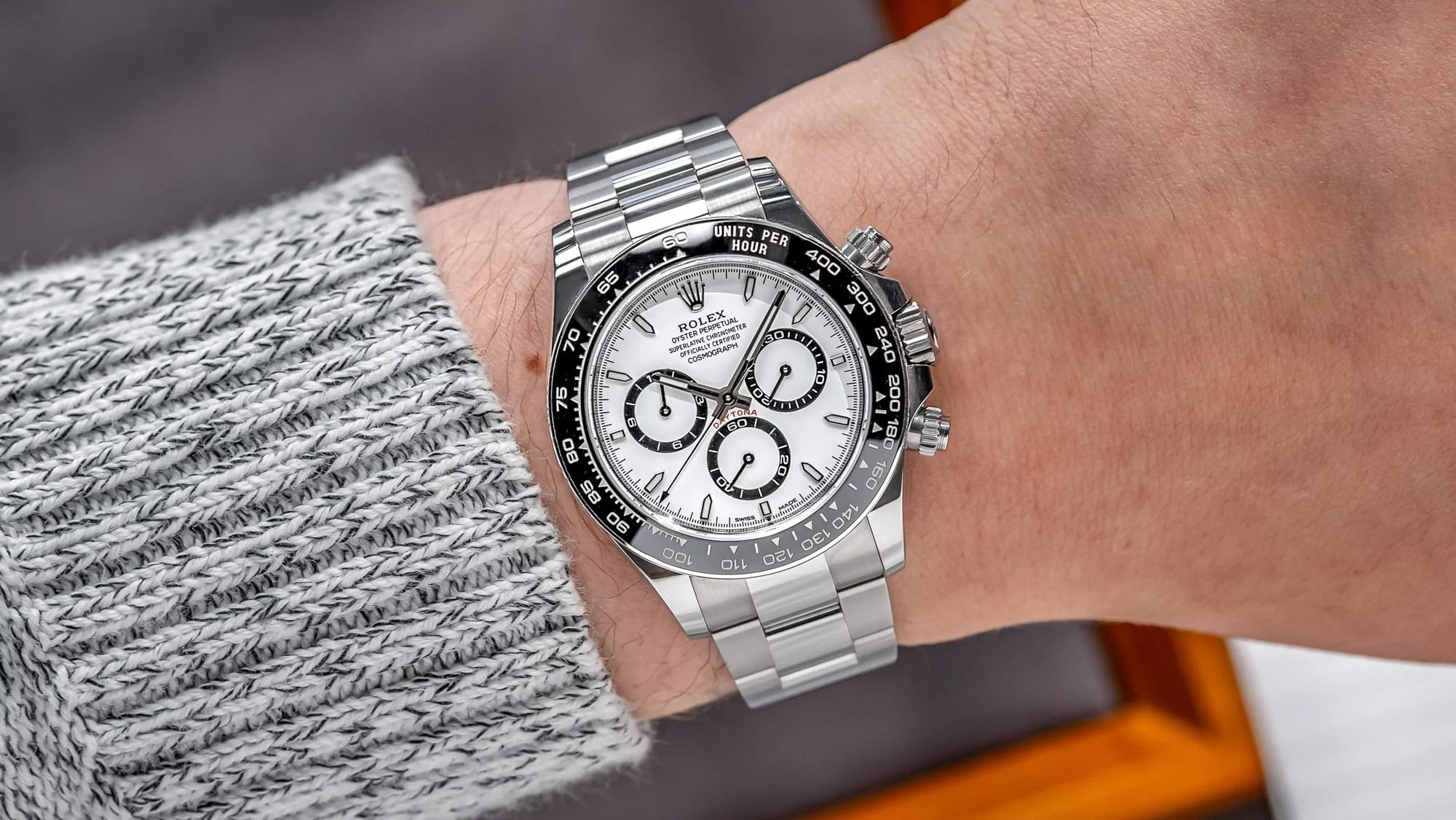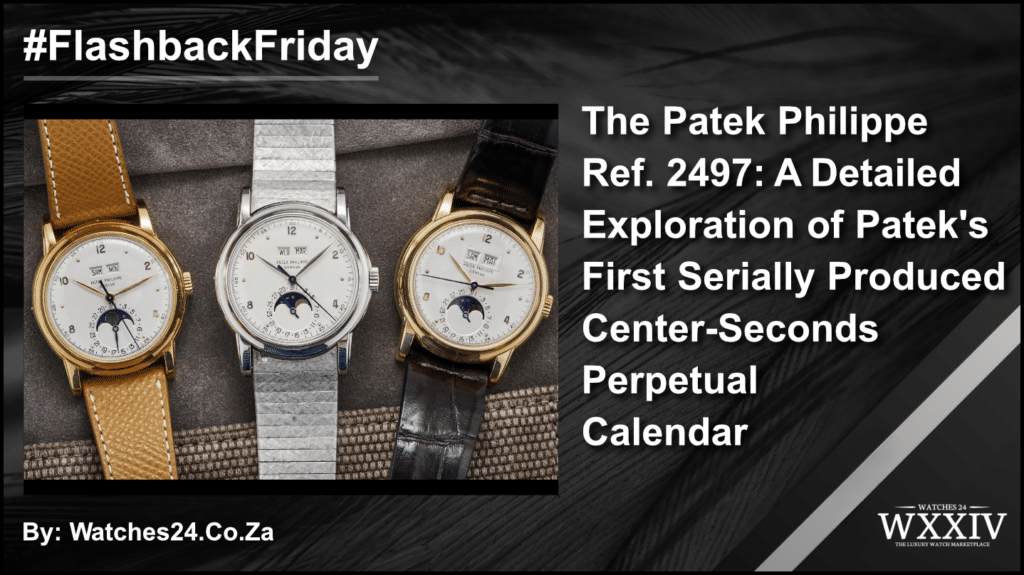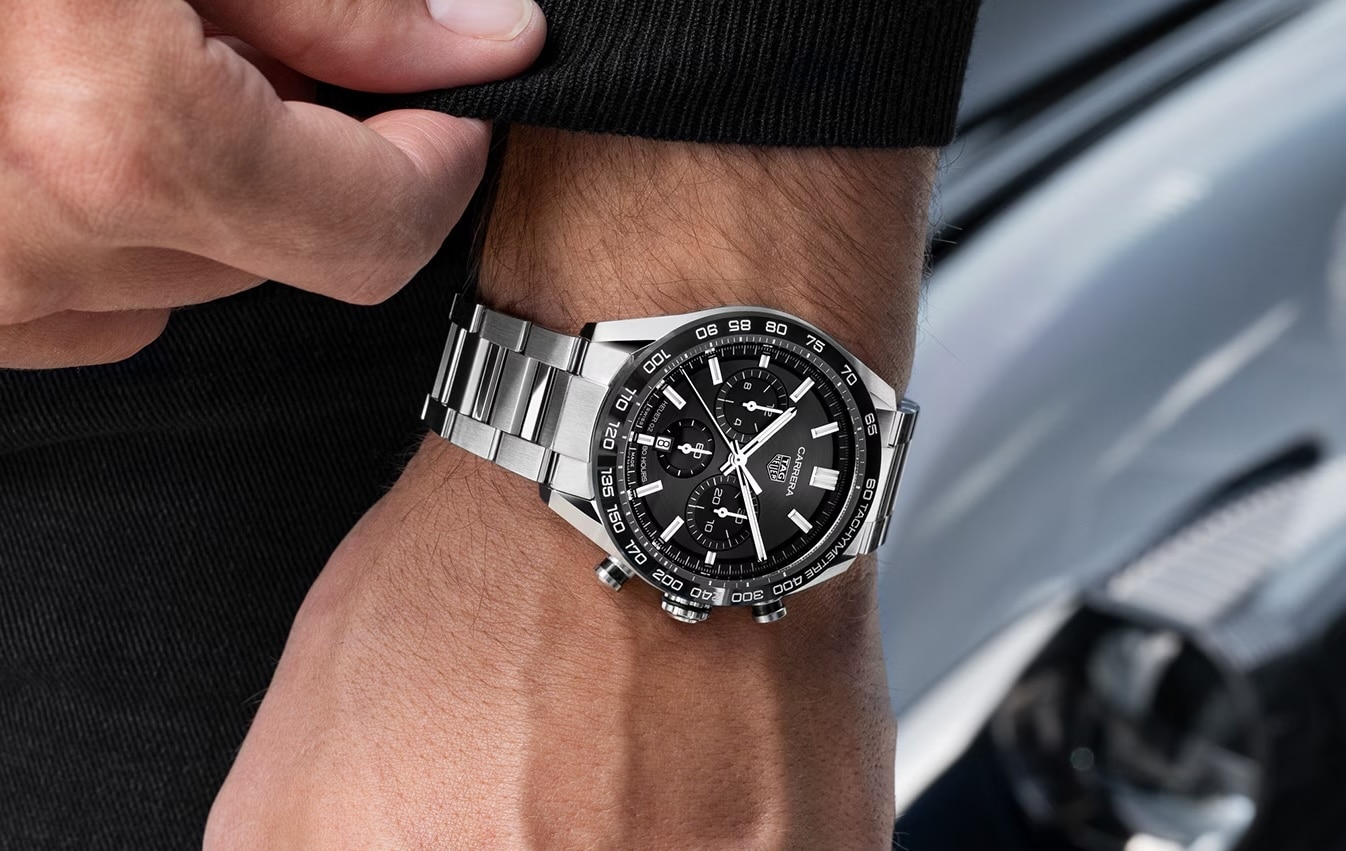
Rolex Daytona
Rolex Daytona represents more than just high-end watchmaking, as it embodies motorsport heritage alongside chronometric

The Patek Philippe Ref. 2497 stands as a monumental piece in horological history, marking the Swiss manufacturer’s first serially produced central-seconds perpetual calendar. This article delves into the reference’s design, dials, cases, production history, and the intricate details that make it a collector’s treasure.
Historical Background
Introduced in 1951, the Ref. 2497 represented a significant departure for Patek Philippe. It combined perpetual calendar functionality with a central seconds hand, a design shift from the subsidiary seconds traditionally used in earlier perpetual calendar models like the Ref. 1526. The 2497’s production was limited to just 114 examples between 1951 and 1963, with a closely related waterproof model, the Ref. 2438/1, adding 65 more units to the total. This low production number underscores the rarity and desirability of these watches today.
The movement used in the 2497, the manually wound Caliber 27SC Q, was revolutionary at the time, featuring both a perpetual calendar complication and a center seconds mechanism. This combination not only enhanced the watch’s practicality but also set it apart in terms of design and functionality. By 1964, however, both the Ref. 2497 and 2438/1 were discontinued, marking the end of an era and paving the way for subsequent innovations like the automatic perpetual calendar Ref. 3448.
Dial Variations
The Ref. 2497 featured two main dial designs, often referred to as the first and second series. Each design variation brought unique aesthetic characteristics that reflected the evolving tastes of the 1950s and 1960s.
First Series Dials
The first series dials of the Ref. 2497 were heavily inspired by the earlier Ref. 1526. These dials typically featured Arabic numerals for the even hours and dot markers for the odd hours, creating a clean yet somewhat sparse layout. The day and month were displayed in windows at 12 o’clock, while the moon phase and date appeared on a subdial at 6 o’clock. Feuille (leaf) hands completed the look, adding a touch of elegance.
The minute track was relocated to the outer edge of the dial, featuring enamel markings with 1/5-second subdivisions. This design shift was necessary to accommodate the central seconds hand, which was a key distinguishing feature of the 2497. Watches with first-series dials were produced between 1951 and 1954 and were powered by movements with serial numbers ranging from 888,001 to 888,098.
Second Series Dials
The second series dials introduced a bolder and more modern aesthetic. Baton hour markers replaced the Arabic numerals and dot markers, and dauphine hands were used instead of the earlier feuille hands. This change resulted in a more balanced and contemporary appearance.
Interestingly, there were two sub-variations within the second series dials, referred to as “Mark I” and “Mark II.” Mark I dials featured truncated baton markers with flat ends, while Mark II dials showcased elongated pyramidal markers with pointed ends. Despite these updates, second-series dials were far rarer than their first-series counterparts. Research indicates that most watches with second-series dials were completed by 1955 but sold primarily after 1959 due to changing market preferences.
Case Design and Casemakers
The Ref. 2497 was produced with cases made by two legendary casemakers: Emile Vichet and Wenger. Each casemaker brought subtle but distinct differences to the design, contributing to the watch’s overall diversity and collectibility.
Vichet Cases
Vichet cases were used in the earliest examples of the Ref. 2497 and are characterized by their long, pointed lugs and slightly smaller case dimensions (approximately 36.5mm in diameter). These cases also featured flat casebacks, adding to their unique aesthetic. Vichet cases are associated with the first-series dials and represent the initial phase of production, spanning from 1951 to approximately 1953. Estimates suggest that fewer than 40 examples of the Ref. 2497 were produced with Vichet cases.
Wenger Cases
Wenger cases, which appeared later in the production run, were slightly larger (approximately 37mm) and featured domed casebacks. The lugs on Wenger cases are shorter and more rounded compared to the elongated, claw-like lugs of the Vichet cases. Wenger cases are most commonly associated with the transitional and second-series dials, making them a defining feature of the later production models.
Production Numbers and Case Metals
The total production of the Ref. 2497 was limited to 114 pieces, with the majority crafted in yellow gold. Approximately 20 examples were made in pink gold, three in white gold, and two in platinum. These variations in case metal significantly influence the watch’s rarity and value on the secondary market. For example, platinum and white gold examples have achieved multimillion-dollar auction results, reflecting their scarcity and desirability.
By 2024, 56 examples of the Ref. 2497 had been documented as coming to market. Prices ranged from $150,000 to over $3 million, with average valuations hovering around $350,000. The most exceptional examples, particularly those in white metal or featuring unique dial configurations, command significantly higher prices.
The Ref. 2438/1: A Waterproof Sibling
The Ref. 2438/1, introduced alongside the 2497, offered a waterproof alternative with a screw-down caseback. While mechanically identical, the 2438/1 was produced in even smaller numbers (65 pieces) and featured its own unique design elements. All examples of the 2438/1, except for one, were equipped with second-series dials, making it an interesting companion to the 2497 in Patek’s lineup.
Legacy and Collectibility
The Ref. 2497’s significance lies not only in its status as Patek’s first center-seconds perpetual calendar but also in its transitional role between the earlier manually wound perpetual calendars and the automatic models that followed. Its production run coincided with the introduction of the iconic Ref. 2499 perpetual calendar chronograph, further cementing its place in Patek Philippe’s history.
Collectors are drawn to the 2497 for its rarity, historical importance, and variety of configurations. The combination of different dial designs, case metals, and casemakers provides a wealth of options for those seeking to build a comprehensive collection. However, assembling such a collection is no small feat, given the watch’s limited production and high demand.
Conclusion
The Patek Philippe Ref. 2497 is a true masterpiece of mid-20th-century watchmaking. Its innovative design, technical sophistication, and historical significance make it a cornerstone for any serious collector of vintage Patek Philippe watches. As we continue to uncover more about this exceptional reference, its enduring legacy in the world of horology becomes ever clearer.

𝐋𝐢𝐬𝐭 𝐘𝐨𝐮𝐫 𝐖𝐚𝐭𝐜𝐡 – 𝐂𝐫𝐞𝐚𝐭𝐞 𝐲𝐨𝐮𝐫 𝐝𝐞𝐬𝐭𝐢𝐧𝐲
Considering selling your exquisite luxury watch? At Watches 24, we provide the ideal platform for those looking to part ways with their timeless elegance and precision in second-hand luxury watches. Explore the possibilities with our curated collection, where your legendary timepiece can find a new home, defining someone else’s style and enhancing their presence.
𝐁𝐞𝐢𝐧𝐠 𝐨𝐧 𝐭𝐢𝐦𝐞, 𝐧𝐞𝐯𝐞𝐫 𝐠𝐨𝐞𝐬 𝐨𝐮𝐭 𝐨𝐟 𝐬𝐭𝐲𝐥𝐞
Let your legendary second-hand watch find its next chapter at Watches 24!
For selling inquiries, connect with us:
📞 Call: +27 83 406 6354
📧 Email: info@watches24.co.za
📧 Assistance: help@watches24.co.za
💻 Website: https://watches24.co.za

Rolex Daytona represents more than just high-end watchmaking, as it embodies motorsport heritage alongside chronometric

The Legacy Behind the Platinum Daytona The Rolex Daytona Cosmograph 126506 is one of the

The Racing Heritage Behind the TAG Heuer Carrera One of the most recognisable Swiss timepieces
WhatsApp us